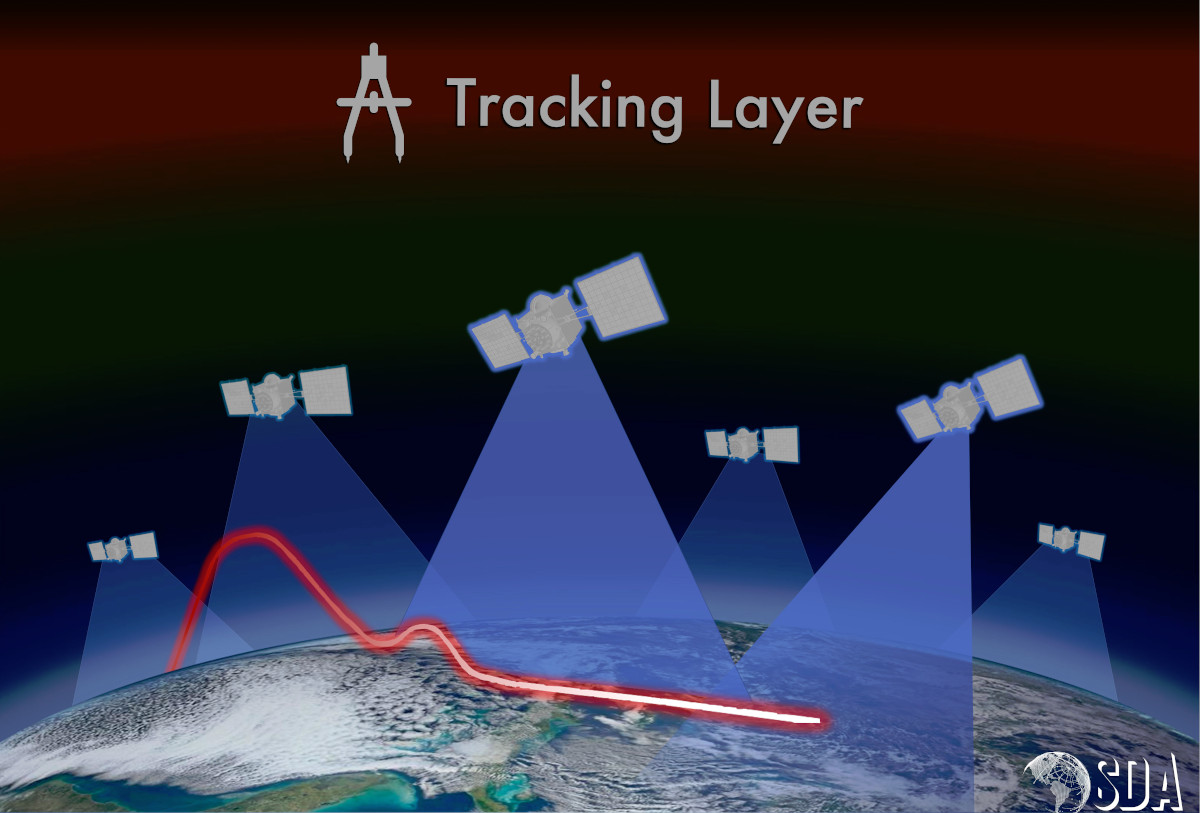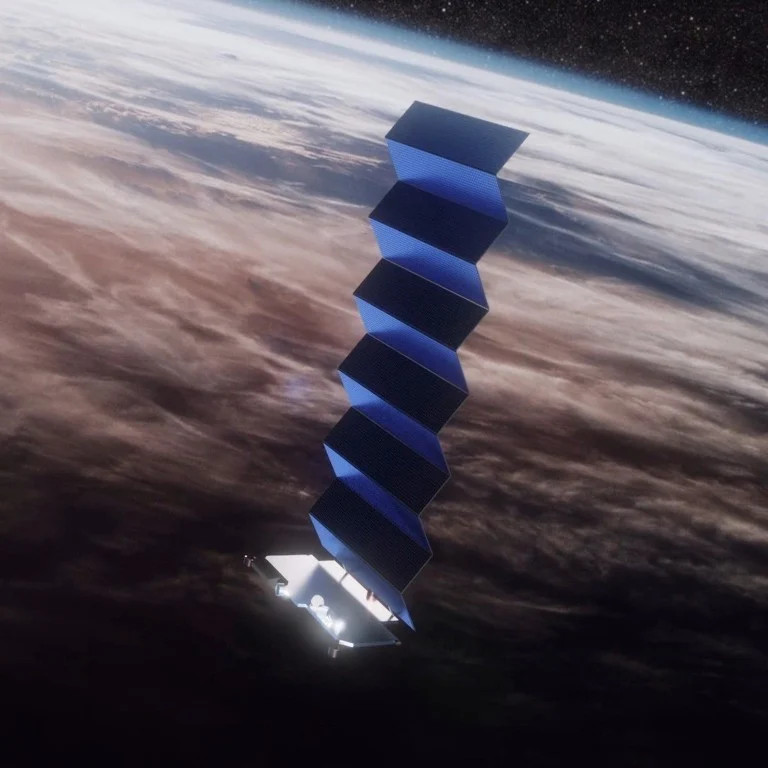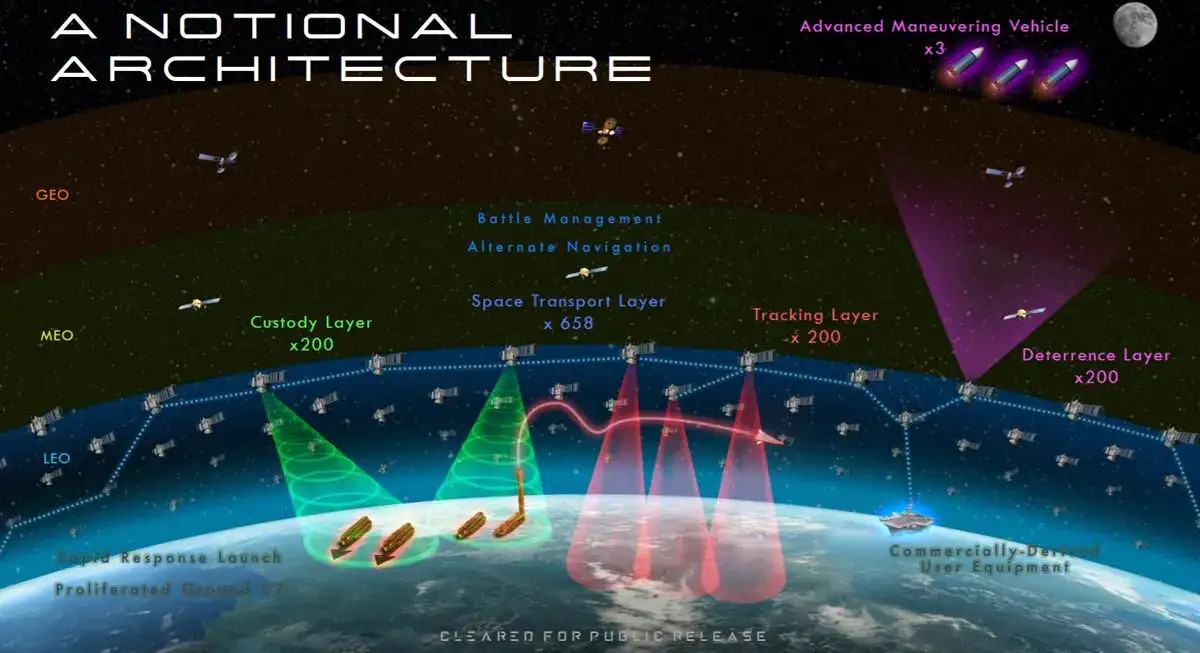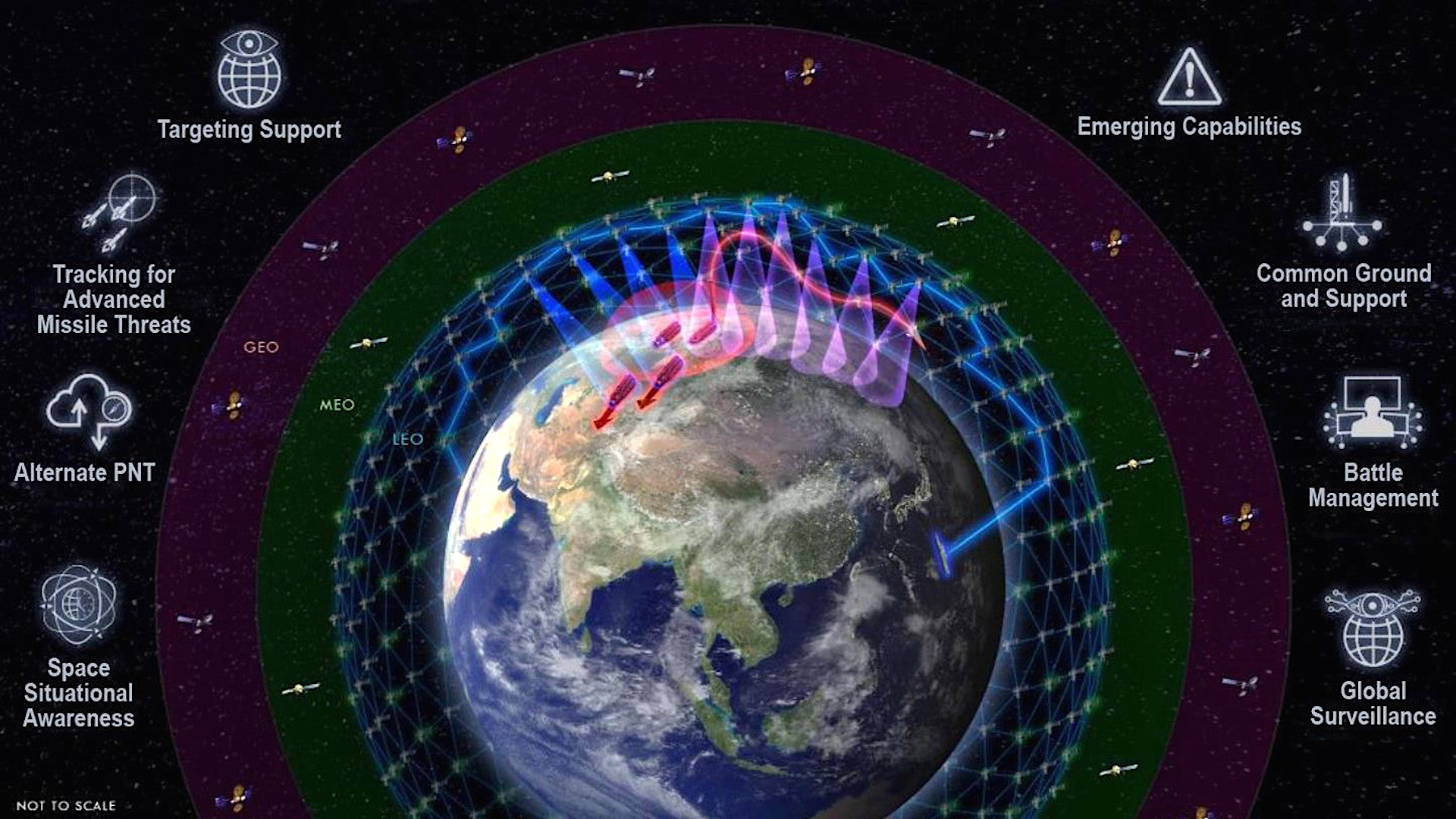The U.S. military has hired L3Harris and SpaceX to build small satellites with powerful infrared sensors capable of spotting and tracking ballistic missiles and hypersonic weapons. These satellites could become part of a large and broader early warning constellation with hundreds of space-based sensors and communications nodes watching for incoming threats, monitoring their flight, and potentially providing targeting data to missile defense assets.
The Pentagon announced that the Space Development Agency (SDA) had awarded the contracts to L3Harris and SpaceX, worth around $193.5 million and just over $149 million, respectively, on Oct. 5, 2020. Each company will be responsible for building four satellites, each with a wide field of view (WFOV) overhead persistent infrared (OPIR) sensor, in support of work on what SDA calls Tranche 0 of the Tracking Layer of the planned overarching early warning constellation.
“SDA is developing the low-cost proliferated WFOV space vehicles that provide the missile warning and the tracking information for national defense authorities, as well as tracking and cueing data for missile defense elements,” Mark Lewis, the Acting Deputy Undersecretary of Defense for Research and Engineering, said in a statement to C4ISRNET.
“This capability [the Tracking Layer] encompasses space-based sensing, as well as algorithms, novel processing schemes, data fusion across sensors and orbital regimes, and tactical data products able to be delivered to the appropriate user,” according to SDA’s website. This Layer’s Tranche 0 could eventually grow to 20 satellites and this portion of the larger constellation may eventually have as many as 200 space-based sensors.

SpaceX’s satellite will be derived from that company’s Starlink design, which was originally designed as part of an effort to provide increased access to broadband internet for commercial and military purposes. An as-yet-unknown subcontractor will be providing the OPIR sensor.
L3Harris is developing both its satellite and sensor in-house. The company has not yet released details about the design of either one.
SDA’s goal is to launch the first Tranche 0 satellites into Low Earth Orbit (LEO) in 2022 and then have moved on to the Tranche 1 stage by 2024, where the Tracking Layer will be able to provide persistent monitoring for missile and hypersonic threats over specific regions of interest. The hope is that there will be enough satellites in orbit by 2026 to provide global early warning coverage.

The idea is that the Tracking Layer will also be more responsive, flexible, and resilient to the ever-more real prospect of an enemy anti-satellite attack by using this large, distributed constellation of small satellites. At present, the U.S. military’s space-based early warning capability comes from a relatively limited number of larger satellites, such as the Space-Based Infrared System (SBIRS) constellation, which you can read about in more detail here. SBIRS notably provided an advance alert that Iranian ballistic missiles were headed toward bases hosting U.S. troops in Iraq in January, giving those individuals time to seek cover. SBIRS’ sensors are also known to be powerful enough to spot infrared events that are much smaller than a ballistic missile blasting off, such as the launch of smaller missiles, large explosions, and even artillery fire.
The Tracking Layer isn’t the only planned distributed space-based sensor program in the works, either. It’s “going to combine with activities in the Missile Defense Agency as they build toward their Hypersonic and Ballistic Tracking Space Sensor (HBTSS) medium field of view (MFOV) space vehicles,” Acting Deputy Undersecretary of Defense Lewis added in his statement to C4ISRNET.
SDA’s planned space-based early warning architecture will also include a so-called Transport Layer, which will consist of hundreds of satellites with communications and data-sharing systems. “The idea is it connects to the National Defense Space Architecture—the NDSA transport layer—via optical intersatellite links,” Lewis explained. “And that will enable low latency dissemination for missile warning indications. It will provide track directly to the joint warfighters.”

These “optical intersatellite links” have not been described in detail, but sound very much like a laser communications system. Work on laser-based communications in space, and for sending data to and from space-based systems and terrestrial nodes, has been going on for decades and a number of systems have already demonstrated the capability on an experimental level. Laser communications offer improved performance and reliability over traditional systems, especially over very long distances. In addition, using laser light rather than radio waves to transmit these signals makes these systems impervious to radio frequency jamming or spoofing and immune to intercept by traditional signals and electronic intelligence systems.
In August, York Space Systems and Lockheed Martin received their own contracts from SDA, worth $94 million and $188 million, respectively, for the first Transport Layer satellites. Tranche 0 of the Transport Layer is expected to consist of 20 satellites, as well.
SDA has also talked about developing more layers to provide additional early warning coverage, as well as other support, again in a distributed manner that would be more survivable in face of anti-satellite attacks. These could include a Custody Layer, focused on tracking mobile threats, such as ballistic missile transporter-erector-launchers, on the ground, and a Navigation Layer offering an alternative to the GPS constellation as part of a concept commonly referred to as Assured Positioning, Navigation, and Timing (PNT). An additional Deterrence Layer could also provide outward coverage of potential threats further out in space, an area of growing concern for the U.S. military.
Maintaining these large, distributed constellations would also require rapid space launch capabilities, an area that the U.S. military has been heavily investing in already and that you can read more about in these previous War Zone pieces. There is also the potential to use other space-based systems, including small space stations, to provide on-orbit repairs and other services in the future.
With potential American adversaries, ranging from Russia and China to Iran and North Korea, continuing to expand their ballistic missile arsenals and introduce new systems, including hypersonic weapons, the importance of early warning capabilities is only set to keep growing in the near term. Russia, in particular, as well as China, are also pursuing a variety of anti-satellite capabilities, including potential on-orbit interceptors launched from small “killer satellites,” which challenge the U.S. military’s existing space-based infrastructure.

Questions and concerns about the feasibility and practicality of the planned National Defense Space Architecture have already cropped up. In many ways, the basic concept as it stands now is reminiscent of the Brilliant Eyes space-based sensor constellation that was to be part of the infamously abortive Strategic Defense Initiative (SDI), better known by the derisive nickname Star Wars. That effort, which formally began in 1983, was ultimately abandoned amid ballooning costs and technical issues.
While there have been significant technological developments in the intervening decades that could help make the new layered system a reality, there remain a number of hurdles. The difficulty in tracking hypersonic threats after launch when they “go cold” and are difficult for infrared sensors to find, let alone track, is one particularly obvious challenge. This issue is already present when it comes to tracking traditional ballistic missiles, which also have a smaller thermal signature in the mid-course portion of their flight.
The U.S. military has been working on a Midcourse Tracking Sensor project to help address this problem, but it remains to be seen when that system will be available for widespread use and if it will be small enough to fit on the satellites SDA is looking at for its Tracking Layer. There has already been separate criticism of the idea that small, commercial derivative satellites will be able to suitably support military requirements, in general.
“Launching hundreds of cheap satellites into theater as a substitute for the complex architectures where we provide key capabilities to the warfighter will result in failure on America’s worst day if relied upon alone. The analysis shows that,” then-Secretary of the Air Force Heather Wilson said in 2019. “Increasing the number of satellites helps. But numbers alone are not enough. The study also found that space missions that are not well aligned with commercial, low-Earth orbit satellite are actually better off staying where they are or making other changes to protect themselves.”

When it comes to emerging hypersonic threats, even if U.S. military early-warning satellites can spot and track them, there is also a real debate about whether it ever be truly feasible to try and intercept them. “There is no defense against hypersonic … you’re not gonna defend against it,” Chairman of the Joint Chiefs of Staff U.S. Army General Mark Milley told members of Congress at a hearing this past March. “Those things are going so fast you’re not gonna get it. You gotta shoot the archer. You gotta go deep, downtown and you gotta get it on the offense.”
There is also simply a matter of cost. While using distributed constellations of small, relatively low-cost satellites, the total numbers SDA is looking at for its various layers could still very well be fairly expensive to establish and maintain. To support the idea of rapidly replacing lost satellites in a conflict, there will also need to be sufficient stockpiles of spare systems in reserve and on-call launch services ready to put them into space on short notice.
For some sense scale, fully replacing the loss of just a tenth of a constellation consisting of 1,000 satellites would mean putting 100 new satellites into orbit. At the same time, it is also worth noting that SpaceX has demonstrated the ability to launch dozens of Starlink satellites at a time.

All told, it will be very interesting to see how SDA’s plans for the overarching National Defense Space Architecture continue to evolve now that work on the first tracking and transport satellites is underway.
Contact the author: joe@thedrive.com
